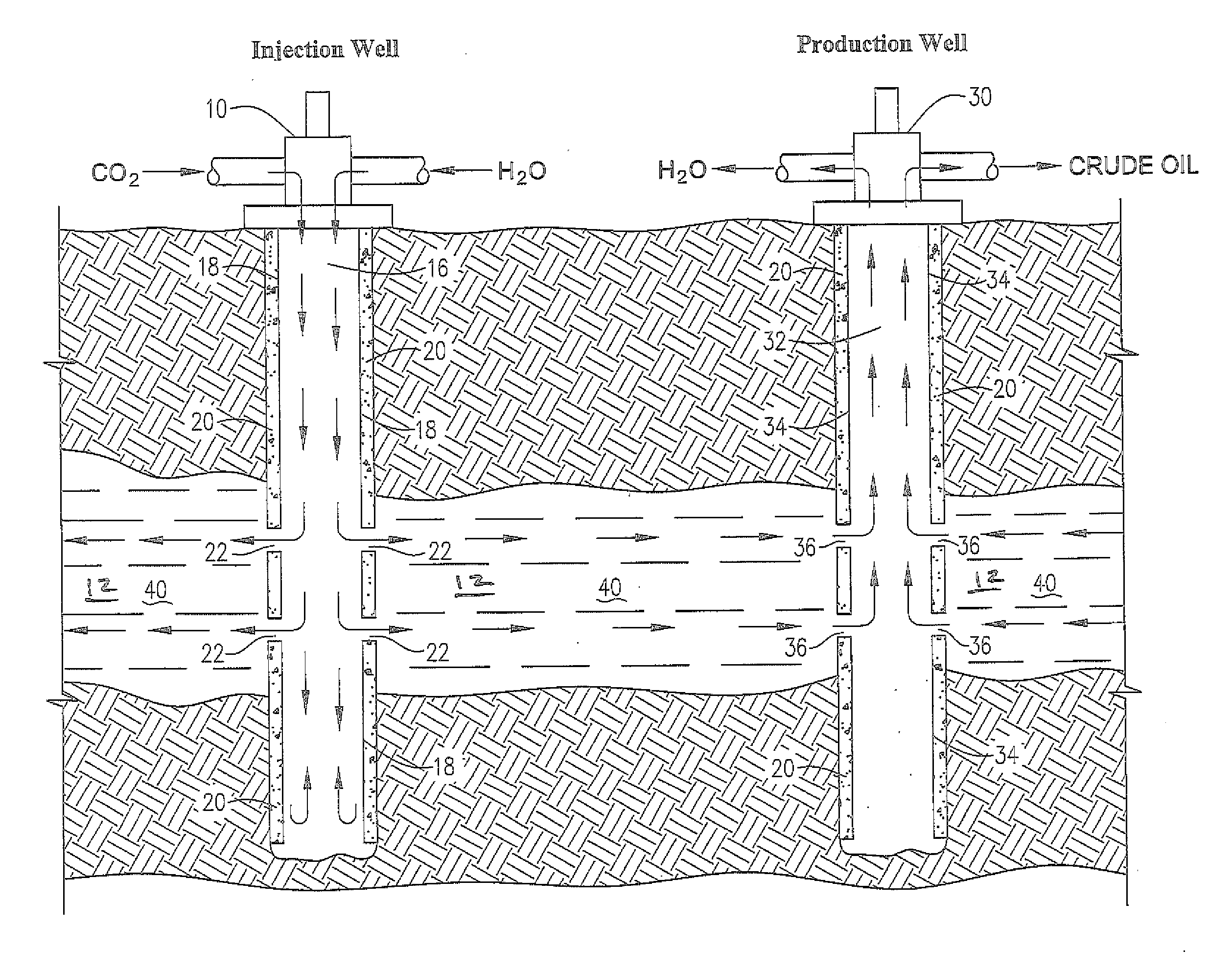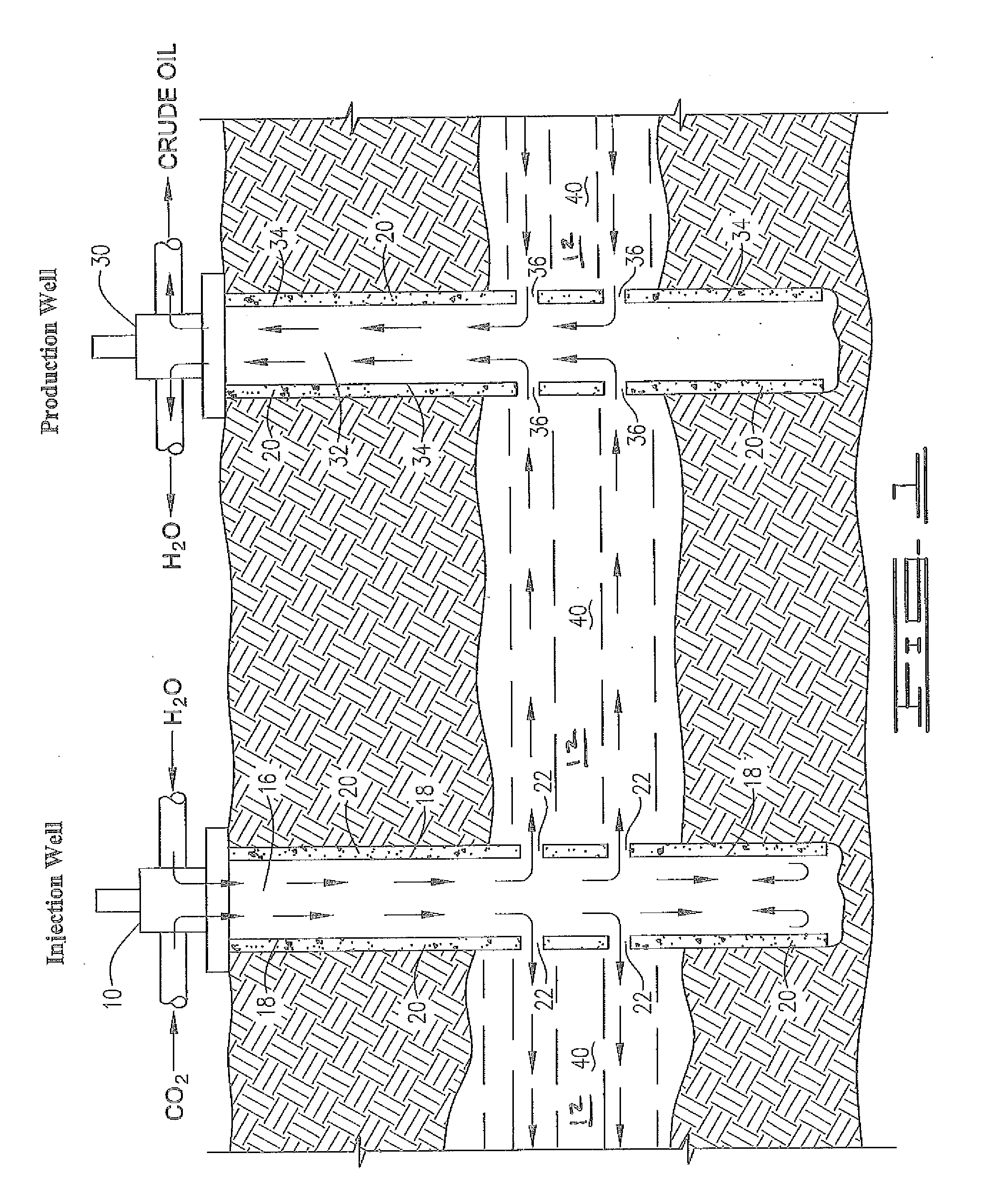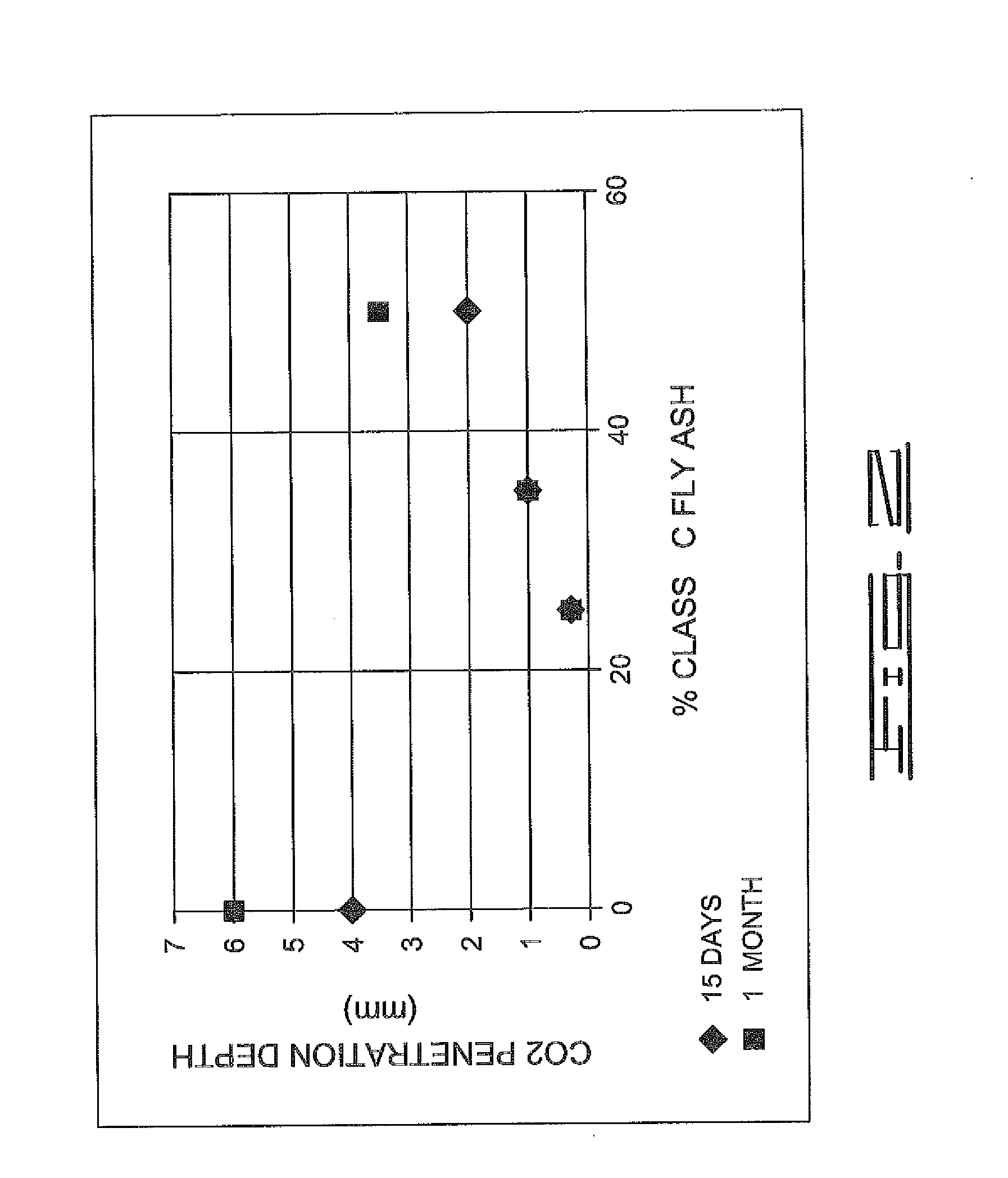Carbon dioxide-resistant portland based cement composition
a technology of portland based cement and carbon dioxide, which is applied in the direction of sealing/packing, chemistry apparatus and processes, and wellbore/well accessories. it can solve the problems of hydraulic cement being corroded by carbonic acid, lowering compressive strength, and fluid migration undesired, so as to enhance the recovery of hydrocarbons.
- Summary
- Abstract
- Description
- Claims
- Application Information
AI Technical Summary
Benefits of technology
Problems solved by technology
Method used
Image
Examples
example 1
[0035]The inventive carbon dioxide-resistant hydraulic cement composition was tested in the laboratory for its ability to form hardened hydraulic cement capable of withstanding corrosion by carbon dioxide. Specifically, the effect of varying the amount of the Class C fly ash utilized in the composition on the carbon dioxide corrosion resistance of the hardened cement samples was evaluated.
[0036]Each cement slurry was tested according to API Specification 10, Section 5. First, various hydraulic cement composition slurries including the inventive carbon dioxide-resistant hydraulic cement composition were prepared by admixing Class H Portland cement, Class C fly ash (except in formulation No. 1, the control sample), a fluid loss additive (Halad-344), a defoamer (D-Air 3000 L) and distilled water together to form a slurry. The components and density of the slurries are shown by Table 1 below.
TABLE 1Hydraulic Cement Slurry FormulationsSampleSampleSampleSampleFormulationNo. 1No. 2No. 3No....
PUM
| Property | Measurement | Unit |
|---|---|---|
| density | aaaaa | aaaaa |
| pressure | aaaaa | aaaaa |
| temperature | aaaaa | aaaaa |
Abstract
Description
Claims
Application Information
 Login to View More
Login to View More - R&D
- Intellectual Property
- Life Sciences
- Materials
- Tech Scout
- Unparalleled Data Quality
- Higher Quality Content
- 60% Fewer Hallucinations
Browse by: Latest US Patents, China's latest patents, Technical Efficacy Thesaurus, Application Domain, Technology Topic, Popular Technical Reports.
© 2025 PatSnap. All rights reserved.Legal|Privacy policy|Modern Slavery Act Transparency Statement|Sitemap|About US| Contact US: help@patsnap.com



